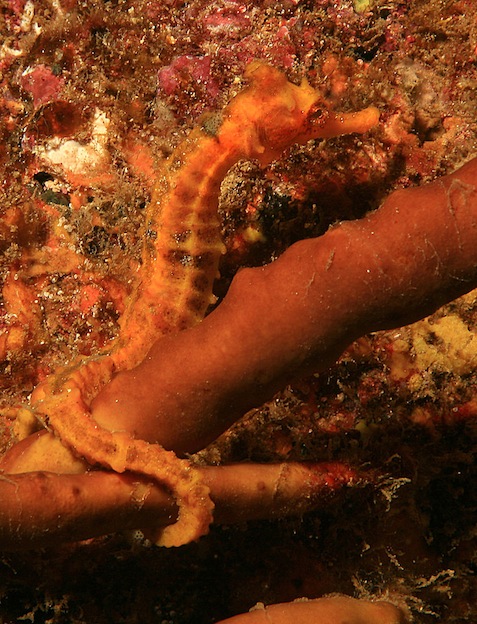
Behavior
Brown algae is commonly found in the areas around the habitat of the Pacific Seahorse. It isn’t unusual for them to just be out there floating along. They are going to be mistaken for algae and that helps their overall survival. They don’t swim fast and often need to rest. They look for low currents so that they can be in water that won’t cause them to become easily exhausted.
Diet /Feeding
Plankton, small microorganisms, and crustaceans make up the diet for the Pacific Seahorse. They swallow their food whole so it has to be small enough to fit into the snout. They feed often as they don’t have a digestive system. They also eat slowly so a great deal of their life is spent searching for food and then consuming it. They seem to be able to find more than enough food in their natural habitat.
Reproduction
When males and females find each other they can take part in courtship rituals. This can lead to successful mating after they have choreographed their movements to be the same as each other. This can be a time consuming effort for them to successfully complete.
The female will then deposit eggs into the male. He has a pouch where he will keep the eggs safe for a couple of weeks. During this period of time his body will swell up to many times the normal size. This is a way for him to be able to avoid predators until the young arrive.
There can be hundreds of eggs deposited at one time. The average length of time for them to be born is 2 weeks. The warmer the temperature is the faster they will grow and arrive. The young have to be able to fend for themselves from the moment they arrive. They will mostly be consumed as prey though and so only a very tiny fraction of them will reach the age of maturity.
(source:google/http://www.seahorseworlds.com/)
No comments:
Post a Comment